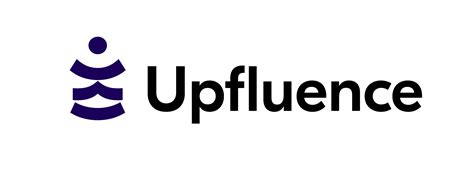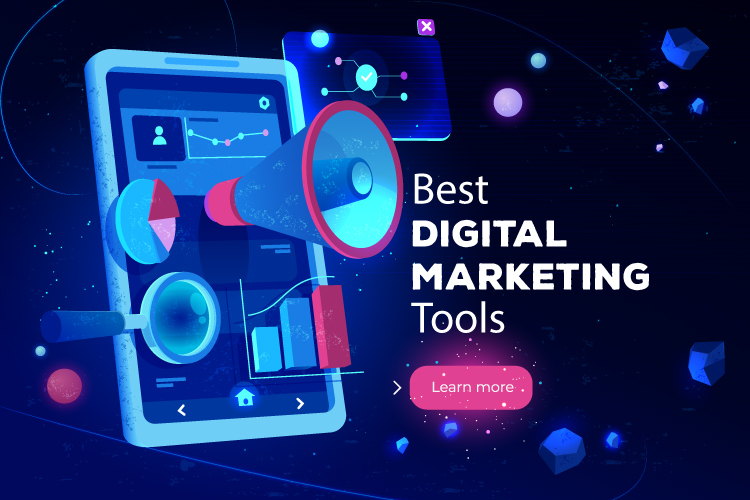In an era where online presence can make or break a business, selecting the right digital marketing tools is crucial for driving growth, optimizing campaigns, and maximizing return on investment (ROI). From search engine optimization (SEO) and social media management to email automation and conversion optimization, the landscape of marketing technology (MarTech) is vast and continually evolving. This comprehensive review examines the leading solutions across key categories, helping marketers identify which platforms align best with their objectives, budgets, and technical capabilities.
A. Search Engine Optimization (SEO) Tools
A. Ahrefs
-
Backlink Analysis: Industry‑leading backlink database with historical data.
-
Keyword Explorer: Generates thousands of keyword suggestions with difficulty scores.
-
Site Audit: Identifies technical SEO issues and prioritizes fixes.
B. SEMrush
-
Keyword Research: Comprehensive keyword tracking across devices and regions.
-
Competitive Intelligence: Reveals competitors’ paid and organic tactics.
-
On‑Page SEO Checker: Offers tailored recommendations for content optimization.
C. Moz Pro
-
Keyword Explorer: Combines click‑through data with volume estimates.
-
Link Explorer: Tracks domain authority and spam score.
-
Rank Tracking: Monitors keyword positions over time and across locales.
D. Screaming Frog SEO Spider
-
Site Crawling: Deep crawl of websites to detect broken links, redirects, and metadata issues.
-
Integration: Connects with Google Analytics and Search Console for enriched insights.
-
Custom Extraction: Uses XPath to pull any data from HTML pages.
B. Web Analytics Platforms
A. Google Analytics 4 (GA4)
-
Event‑Driven Model: Focuses on user interactions rather than pageviews.
-
Cross‑Platform Tracking: Unifies web and app data for holistic insights.
-
Machine Learning Insights: Automatically surfaces trends and anomalies.
B. Adobe Analytics
-
Real‑Time Reporting: High‑volume data ingestion with sub‑second latency.
-
Advanced Segmentation: Granular audience creation using multiple criteria.
-
Predictive Analytics: Leverages Adobe Sensei to forecast outcomes.
C. Matomo (formerly Piwik)
-
Self‑Hosted Option: Full data ownership and GDPR compliance.
-
Heatmaps & Session Recording: Visualize user engagement and drop‑off points.
-
Custom Reports: Drag‑and‑drop interface for tailored dashboards.
C. Social Media Management Tools
A. Hootsuite
-
Unified Dashboard: Schedule and publish across 20+ social networks.
-
Social Listening: Track brand mentions and keywords in real time.
-
Team Collaboration: Assign tasks and approvals within the platform.
B. Buffer
-
Easy Scheduling: Queue posts with optimal timing suggestions.
-
Content Calendar: Visual overview of upcoming campaigns.
-
Analytics: Measures reach, engagement, and link clicks.
C. Sprout Social
-
Smart Inbox: Consolidates messages from all channels for streamlined response.
-
ViralPost™: AI‑driven scheduling for peak engagement windows.
-
Report Builder: Customizable reports for stakeholders.
D. Later
-
Visual Planning: Drag‑and‑drop Instagram grid planner.
-
Linkin.bio: Turn your Instagram feed into a clickable landing page.
-
User‑Generated Content: Discover and repost brand mentions.
D. Email Marketing and Automation
A. Mailchimp
-
Drag‑and‑Drop Builder: Create responsive emails without coding.
-
Behavioral Targeting: Send messages based on user actions.
-
A/B Testing: Test subject lines, content, and send times.
B. ActiveCampaign
-
Advanced Automations: Visual workflow builder for complex sequences.
-
CRM Integration: Built‑in CRM to manage contacts and deals.
-
Predictive Sending: AI determines the best time to send emails.
C. HubSpot Marketing Hub
-
Contact Management: Unified database across marketing, sales, and service.
-
Email Health Insights: Monitors deliverability and engagement metrics.
-
Personalization Tokens: Dynamically insert contact properties into emails.
D. Drip
-
E‑commerce Focus: Deep integrations with Shopify, WooCommerce, and Magento.
-
Behavior‑Based Flows: Automate based on browsing and purchase history.
-
Revenue Attribution: Tracks revenue generated by each email campaign.
E. Content Creation and Management
A. WordPress
-
Extensible Platform: Thousands of plugins for SEO, security, and performance.
-
Gutenberg Editor: Block‑based editing for flexible layouts.
-
Community Support: Vast ecosystem of themes and developers.
B. Canva
-
Templates Library: Professionally designed layouts for social, email, and web.
-
Collaboration: Real‑time commenting and version history.
-
Brand Kit: Store logos, fonts, and color palettes for consistency.
C. Grammarly
-
Writing Suggestions: Grammar, clarity, and tone improvements.
-
Plagiarism Checker: Ensures originality against billions of web pages.
-
Style Guides: Customizable rules to enforce brand voice.
D. Surfer SEO
-
Content Editor: Real‑time recommendations for keyword usage and word count.
-
SERP Analyzer: Compares top‑ranking pages to guide optimization.
-
Audit Tool: Identifies gaps in existing content.
F. Paid Advertising and PPC Management
A. Google Ads

-
Search & Display: Reach users across search results and millions of websites.
-
Smart Bidding: Machine learning–driven bid strategies for conversions.
-
Responsive Ads: Automatically adjusts headlines and descriptions for best performance.
B. Facebook Ads Manager
-
Detailed Targeting: Layer demographics, interests, and behaviors.
-
Lookalike Audiences: Find new customers similar to your best existing ones.
-
Ad Creative Testing: Multiple creative assets in a single ad set.
C. Microsoft Advertising
-
LinkedIn Profile Targeting: Reach professionals by company, job title, or industry.
-
Import from Google Ads: Easily migrate campaigns and budgets.
-
Intelligent Keywords: Suggests high‑potential terms based on performance data.
D. Kenshoo (now Skai)
-
Cross‑Channel Management: Unified interface for search, social, and e‑commerce ads.
-
Budget Optimization: Automated budget allocation to maximize ROI.
-
Predictive Forecasting: Anticipates performance shifts before they happen.
G. Marketing Automation Platforms
A. Marketo Engage (Adobe)
-
Lead Nurturing: Multi‑touch programs with triggers and thresholds.
-
Account‑Based Marketing (ABM): Target high‑value accounts with personalized content.
-
Revenue Cycle Analytics: Visualize funnel performance and ROI.
B. Pardot (Salesforce)
-
Lead Scoring & Grading: Prioritize prospects based on behavior and fit.
-
Engagement Studio: Drag‑and‑drop canvas for campaign flows.
-
Sales Integration: Syncs seamlessly with Salesforce CRM.
C. Eloqua (Oracle)
-
Program Canvas: Visual campaign builder with advanced logic.
-
Data Management: Unified customer profiles across marketing touchpoints.
-
Integration Apps: Connects with hundreds of enterprise systems.
H. Customer Relationship Management (CRM)
A. Salesforce Sales Cloud
-
Custom Objects: Tailor data model to unique business needs.
-
Einstein AI: Predictive lead scoring and opportunity insights.
-
AppExchange: Marketplace of thousands of integrations.
B. HubSpot CRM
-
Free Tier: Robust feature set with unlimited users and contacts.
-
Live Chat & Bots: Engage website visitors in real time.
-
Deal Pipelines: Visualize and automate sales processes.
C. Zoho CRM
-
Blueprints: Define and enforce sales process stages.
-
AI Assistant (Zia): Suggests best times to contact leads.
-
Multichannel Engagement: Email, phone, live chat, and social.
I. A/B Testing and Conversion Rate Optimization (CRO)
A. Optimizely
-
Full‑Stack Testing: Run experiments on web, mobile, and server side.
-
Feature Flags: Roll out new functionality safely to subsets of users.
-
Analytics Integration: Deep dive into experiment results with built‑in stats.
B. VWO (Visual Website Optimizer)
-
Visual Editor: Point‑and‑click interface for creating variants.
-
Heatmaps & Clickmaps: Understand user interactions visually.
-
Survey & Feedback: Gather qualitative data directly from visitors.
C. Google Optimize
-
Free & Paid Versions: Easy entry point for small teams.
-
Native GA4 Integration: Leverages existing Analytics audiences.
-
Redirect Tests: Compare entirely different page URLs.
J. Influencer Marketing Platforms
A. Upfluence

-
Database of Creators: Filter by niche, engagement, and audience demographics.
-
CRM for Influencers: Manage relationships and campaigns in one place.
-
ROI Tracking: Attribute conversions and sales to influencer content.
B. Traackr
-
Network Mapping: Visualize influencer connections and content themes.
-
Benchmarking: Compare influencer performance against industry standards.
-
Fraud Detection: Identify fake followers and inflated engagement.
C. AspireIQ
-
Community Management: Build long‑term relationships with brand advocates.
-
Content Approval Workflows: Streamline review and compliance processes.
-
Performance Analytics: Track reach, engagement, and conversions.
K. Emerging and Specialized Tools
A. Chatbot Builders (e.g., ManyChat, Chatfuel)
-
Messenger & SMS Automation: Engage audiences on their preferred messaging apps.
-
E‑commerce Integrations: Facilitate transactions and support via bots.
B. Voice Search Optimization (e.g., Jetson.ai)
-
Schema Markup Assistance: Optimize content for voice assistants.
-
Conversational Copywriting: Tailor language for spoken queries.
C. Interactive Content Platforms (e.g., Outgrow, Ceros)
-
Quizzes & Calculators: Generate leads through personalized experiences.
-
Microsites & Infographics: Create engaging, shareable assets without developers.
D. Privacy & Compliance Suites (e.g., OneTrust, TrustArc)
-
Cookie Consent Management: Automate GDPR and CCPA compliance.
-
Data Subject Requests: Streamline user rights fulfillment.
Implementation Considerations
A. Define Objectives: Map each tool to specific KPIs—traffic growth, lead volume, or revenue.
B. Ensure Integration: Prioritize platforms with robust APIs or native connectors to avoid data silos.
C. Assess Scalability: Choose solutions that can grow with your team and campaign complexity.
D. Budget Wisely: Balance feature needs against total cost of ownership, including training and support.
E. Train and Support: Invest in onboarding, documentation, and internal champions to drive adoption.
F. Measure Continuously: Regularly audit tool performance and sunset underused platforms.
Conclusion
Navigating the expansive MarTech ecosystem can be daunting, but aligning your digital marketing toolkit with clear business goals streamlines decision‑making and maximizes impact. By leveraging best‑in‑class solutions across SEO, analytics, social media, email, automation, and more, marketers can create cohesive, data‑driven campaigns that engage audiences, drive conversions, and fuel sustainable growth. Whether you’re a small startup seeking cost‑effective email automation or an enterprise optimizing cross‑channel ad spend, the tools reviewed here provide a solid foundation. Evaluate your unique requirements, test promising platforms through free trials or pilot projects, and continually refine your stack to stay ahead in an ever‑evolving digital landscape.






